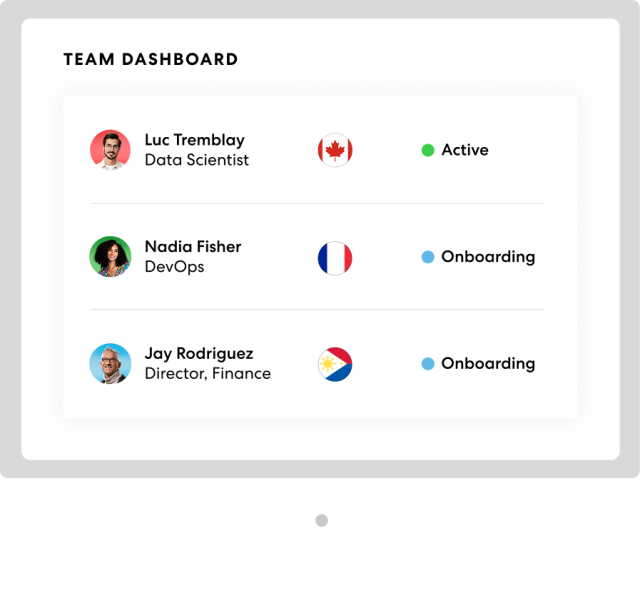Employer of Record líder do setor
Temos orgulho de compartilhar que a NelsonHall nomeou a Velocity Global como líder pela terceira vez em seu relatório de avaliação de EORs de 2023, reconhecendo nossa habilidade de oferecer benefícios imediatos a nossos clientes e atender às suas necessidades futuras.

Contrate talentos globais com facilidade
Crie seu dream team com nossa solução de Employer of Record (EOR) global. Ajudamos você a contratar talentos internacionais com facilidade e em conformidade com a legislação trabalhista local, para sua empresa ganhar o mundo.

Pague suas equipes pontualmente, sempre
Conte com uma solução centralizada, criada por especialistas de renome mundial, para pagar suas equipes globais com precisão e conformidade.

Demonstração da Global Work Platform
Veja como garantir a conformidade no onboarding de talentos em outros países e entrar rapidamente em novos mercados com nossa Global Work Platform™.

Retenha e garanta a satisfação de seus talentos
Equipamos sua empresa com vantagens e recompensas competitivas que mantêm a motivação dos seus talentos a longo prazo.
Benefícios globais
Apoie todas as pessoas da sua equipe com planos de saúde e seguros de vida abrangentes e flexíveis.
Plano global de participação acionária
Recompense facilmente suas equipes com um programa de participação acionária que elimina riscos de conformidade.
Imigração global
Simplifique a transferência de talentos ou a aprovação de vistos, para facilitar as transições de seus colaboradores.
Planos de previdência internacionais
Capacite seus talentos a investir no futuro com planos de previdência flexíveis.
Temos a expertise mundial e o atendimento humano que você precisa para chegar onde quiser.
Especialistas locais
Tecnologia para dream teams globais
Esteja sempre ao lado de suas equipes
Transformando o mundo do trabalho
As empresas vão mais longe com a Velocity Global
Ganhe uma perspectiva global com nossos recursos
Saiba mais sobre contratações sem fronteiras
Tire suas dúvidas sobre contratação global, folha de pagamentos, benefícios, regularização de colaboradores internacionais e preços.








